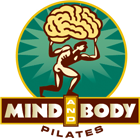One of my clients sent me a link to a video with the above title in which they talk about that very issue. While on one hand, it was great to have women be up front about this, it was also maddening to me that in the interviews there was no mention of the possibility of some work and exercise to minimize this problem. And believe me, it is a big problem that women and men don’t mention in polite society.
How is your Pelvic Floor?
If you think of your Pelvis bones as a big bowl in which the bottom is cut out, you have a general idea of it shape. The pelvic floor is a series of muscles which create a sort of hammock which keeps your genitals and other guts from falling out onto the floor. And for most women after childbirth, those muscles got a little bit too stretched out for their own good leading to a little pee problem. And for most of us, the muscles of the pelvic floor get a little lazy. Oh yes, by the way – MEN HAVE PELVIC FLOORS TOO AND OFTEN HAVE A LITTLE PEE PROBLEM.
But the problem doesn’t stop there. Lax muscles of the pelvic floor can reduce sexual ability and control and as a result, less pleasure. Lax pelvic floor can also affect your anal sphincter too. That doesn’t mean we want you to walk around like you have stick up your ass. But a little strengthening can go a long way.
If you have a problem, there are many physical therapists who specialize in pelvic floor training. And that can be hugely helpful. But you don’t need to wait for your PT to get started.
Kegel exercises are often talked about and generally spoken of as that feeling if you were to stop your pee midstream. I think that is a good start but for me, I can pull up the front of my pelvic floor (the feeling my genitals are lifting) or I can pull up on the midway point or I can pull up towards the back (around the anus). Pulling up doesn’t mean trying to lift your pelvic floor over your head. It is simply a lift of the various parts of the bottom of the ‘bowl’. You can practice them anywhere and should practice them everywhere you can: a stop light, during a boring meeting or conversation, anytime you’re bored and are looking for something to do. And you can experiment to no end when you’re in the bathroom. If you’re spouse tells you to get out of the bathroom, tell him/her that your exercising and to leave you alone.
And now, getting back to exercise and the pelvic floor. My experience is that the more load you put on your body, the more the pelvic floor has to match that work load. And that is especially difficult in faster moving exercises because there are so many muscles working and there isn’t time to think about your pelvic floor. So it needs to be as strong and stable as possible before getting to that point. And that is where Pilates is so helpful.
Because Pilates is a more controlled form of exercise, it gives people a chance to strengthen the muscles they need when they do their preferred ‘sport’ – Tennis, running, Crossfit, cycling, whatever. I think it is especially difficult during jumping type sports but some core strengthening and pelvic floor awareness can definitely help and minimize the problem.
But you don’t need to wait to start a Pilates program to start working your Pelvic floor. START RIGHT NOW! Try it. Just try to lift the bottom of your pelvis and try to feel it, experience it and then hold the lift for a few seconds and then relax. At least for now, there is no right or wrong. JUST DO IT! And then go out and play.

